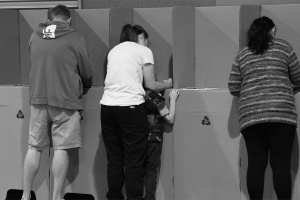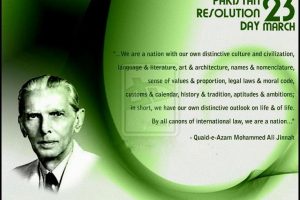Australia, despite its formal ties to the British monarchy, is seen by a growing number of its people as an entirely independent nation—one that has developed its own identity, separate from its colonial past…….By Syed Atiq ul Hassan
Britain’s King Charles III and Queen Camilla recently completed a three-day visit to Australia, a trip that was marked by both enthusiastic celebrations and reflective moments of protest. The royal

couple was welcomed with great fanfare, and the Australian government organized various events to ensure that the visit was memorable for both the public and the monarchy. However, the visit also underscored a changing narrative in Australia, where a growing number of citizens, particularly among the younger and multicultural generations, see the country as a fully independent entity with a diminishing connection to the British Crown.
During their visit, King Charles and Queen Camilla were greeted at Parliament, where they expressed their appreciation for the warm reception. King Charles shared his deep connection to Australia, reminiscing about his first visit to the country as a 17-year-old student when he attended Geelong Grammar School in Victoria for two semesters. This visit marked King Charles’ 11th trip to Australia, his last visit occurring in 2011. However, this trip held special significance as it was his first as monarch, drawing considerable attention from both the government and the public.
Royal Traditions and a Colonial Legacy: While Australia has long been an independent nation, it remains a part of the Commonwealth with the British monarch as its symbolic head of state. Though the Crown holds no direct role in Australia’s parliamentary system, the British monarch continues to appoint the Governor-General of Australia, a tradition that has become more symbolic over the years. This duality was on full display during the visit, with King Charles and Queen Camilla receiving a warm reception in many circles but also facing dissent, particularly from Indigenous Australians who continue to grapple with the long shadow of colonization.
Two major public ceremonies were organized in Sydney, but attendance was limited to those with special passes, including registered & accredited media personnel and invited community leaders. A large public reception took place in Parramatta Park in Sydney’s western suburbs, an area known for its vibrant multicultural community. The event, hosted by New South Wales (NSW) Premier Chris Minns and his deputy, included free barbecue stalls—highlighting Australia’s most beloved dish—and featured displays from provincial services, human welfare organizations, and Cricket NSW.
The event celebrated Australia’s cultural diversity, with performances from various ethnic communities, including traditional Punjabi, Gujarati, and South Indian dances. Indigenous groups also showcased their art and traditions, offering a reminder of the country’s deep Aboriginal heritage. In a break from royal protocol, King Charles and Queen Camilla visited each stall and engaged warmly with attendees, including 550 guests, many of whom eagerly took photos with the royal couple.
Indigenous Protests and Historical Grievances: While many Australians celebrated the royal visit, the trip also drew protests from Indigenous Australians. As the King and Queen arrived at Parliament House in Canberra, Aboriginal leaders and activists stood outside holding banners that condemned the British monarchy and its historical role in the colonization of Australia.
Prominent Indigenous leader and academic, Professor Michael Anderson, penned an open letter that was widely circulated in the media. In his letter, Professor Anderson reminded Australians that the pain of colonization remains fresh for Indigenous communities. He recalled how Australia was first colonized by the Dutch in the 16th century and later by the British in the 18th century, a colonization that led to the dispossession, discrimination, and decimation of Indigenous populations.
“The scars of genocide and occupation remain unhealed,” he wrote, stressing that while the government has made some attempts at reconciliation, such as former Prime Minister Kevin Rudd’s 2008 formal apology, Indigenous Australians still await true recognition of their rights and restitution for the wrongs done to them. For many Indigenous Australians, the presence of British royalty is a painful reminder of the centuries-long struggle for sovereignty and equality.
Although Indigenous activists were unable to stage large protests due to tight security, their sentiments resonated in the public domain through media reports and the publication of open letters.
A Multicultural Generation Moving Beyond the Monarchy: In addition to the protests from Indigenous communities, the visit also highlighted shifting attitudes among Australia’s younger and more multicultural generations. For many of these citizens, Australia’s status as a constitutional monarchy seems increasingly outdated, and the royal visit brought this evolving perspective into focus.
Australia, despite its formal ties to the British monarchy, is seen by a growing number of its people as an entirely independent nation—one that has developed its own identity, separate from its colonial past. For these younger Australians, the monarchy represents a bygone era, a relic of an imperial past that holds little relevance in the nation’s modern-day democratic landscape. This is especially true among the children of immigrants, whose families come from diverse countries outside the Commonwealth. For them, the Queen and now King Charles III are symbolic figures rather than ones with any tangible influence over Australian life.
The debate over whether Australia should sever its ties with the British monarchy entirely has been simmering for years, with republican sentiments periodically rising to the surface. In 1999, Australians voted in a referendum to determine whether the country should become a republic, with the majority voting to retain the monarchy. However, that debate has not gone away, and today’s younger generation appears more inclined to question the relevance of the monarchy in a fully independent Australia.
A Visit That Highlighted Joy, History, and Changing Views: King Charles III and Queen Camilla’s visit to Australia was significant on many levels. It showcased the country’s deep connection to British traditions, while also bringing attention to the growing distance between modern Australia and its colonial past. The royal couple received warm welcomes at public events, and their engagement with the multicultural community of Parramatta reflected the changing face of Australia. However, the protests by Indigenous Australians, coupled with the evolving attitudes of the nation’s youth, underscored the complexities of Australia’s identity as a Commonwealth nation.
While the government celebrated the visit with grand gestures and public festivities, the underlying tensions—historical grievances from Indigenous Australians and the shifting perspectives of the younger generation—served as a reminder that Australia’s relationship with the British monarchy is far from settled. For many, the visit symbolized not just a celebration of continuity, but also an opportunity to reflect on how far Australia has come and where it is headed in the future. (The writer is a Sydney-based journalist a political analyst. He has recently received lifetime achievement award by NSW Multicultural Australia. His email address is shassan@tribune-intl.com).
END




